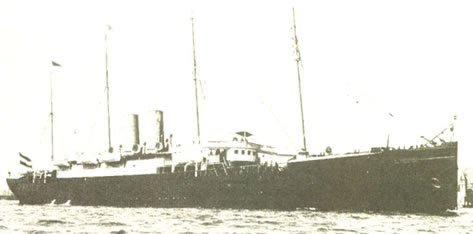Crossing the ocean
By sailing barge or steamer, it was a hard ordeal
....Our wagon took us to Bremen, where we, after a long wait, embarked on a sailing barge that took us to far-away New York. The travel should have taken 8 weeks but bad weather and storms made the voyage longer for another 3 weeks. The amount of food we took disappeared quickly, even when we tried to ration it as much as possible, at least trying to give the children a piece of food every day.
The last week we hardly eat at all, because the herring offered by the shipping company as food was smelling and destroyed; water was also very scarce. I was shaking and praying for our health because typhus broke out on the ship and several people died, without ever completing this journey.....
Crossing the Atlantic Ocean was an undertaking in itself. Until the end of the 19th century, most ships involved in transporting emigrants to America were sailing barges with supporting steam engines. Most of the ships were freighters that carried passengers to the USA in steerage; below decks in the cheapest and absolute minimal accommodations. Upon arrival, the steerage bunks were folded away so the ships could carry coffee and cotton back to Europe.
|
If lucky, the crossing would take only about 3-7 weeks. However, bad weather, counter winds, and other factors could make the crossing into a seemingly endless journey of well over three to five months or longer. The travelers also had to provide most of their own food, and conditions on board were bad. Babies were born and people died during the journey, and on occasions a mortality rate of over 10% was nothing special. |
In 1884, the widow Vochozka of Hrdlorezy and her four remaining children followed three earlier emigrated children to America on the SS Elbe seen below.

As of the last quarter of the 19th century, most ships were of this modern type steamers. A strong competition between the Hamburg and Bremen shipping companies and increasing demands of US authorities to contain illnesses on board strongly improved conditions for the emigrants. Typically, a journey now would take only 10-15 days, with the shipper providing at least some comfort and food
Unless mentioned differently, all pictures are © collection Rozmberk Society, Friends of the Rozmberk Society, or provided under © by individual partners. In some instances, copyright is public domain or could not be established or obtained within reasonable effort.
Design by the Bear (Robert Dulfer 2006-2016)



